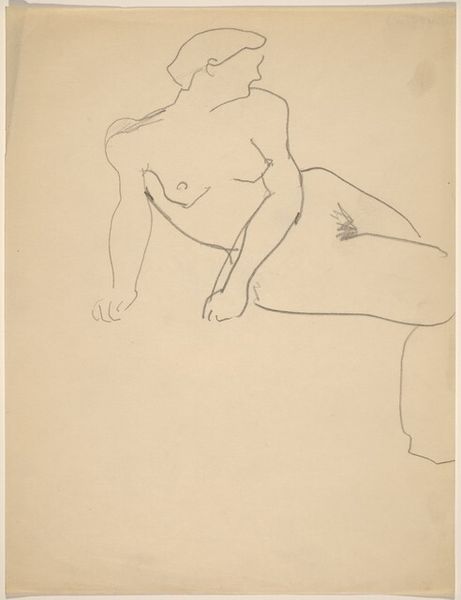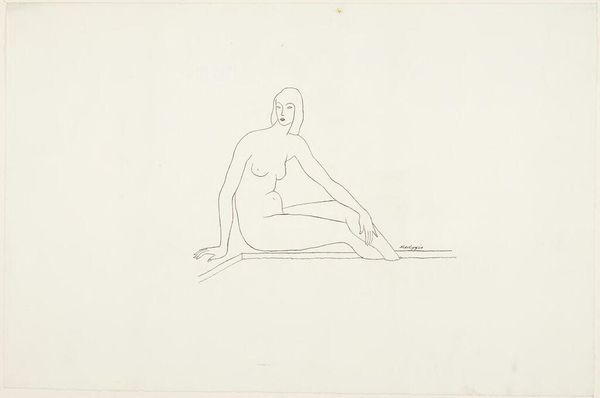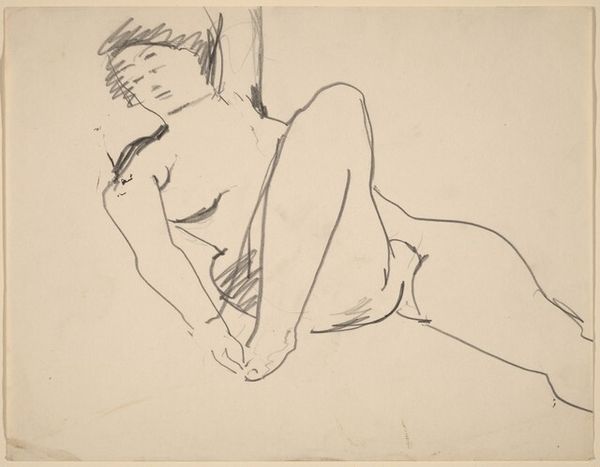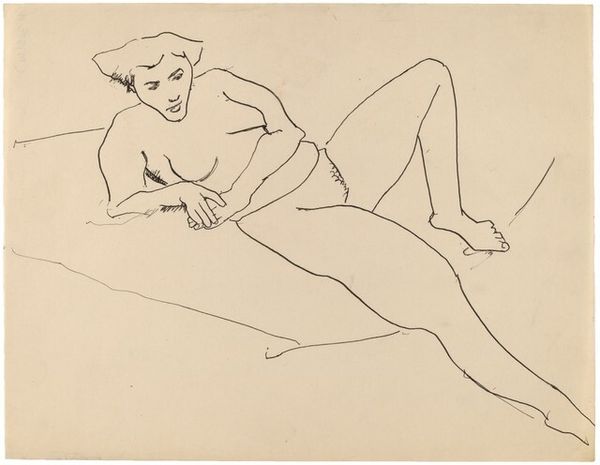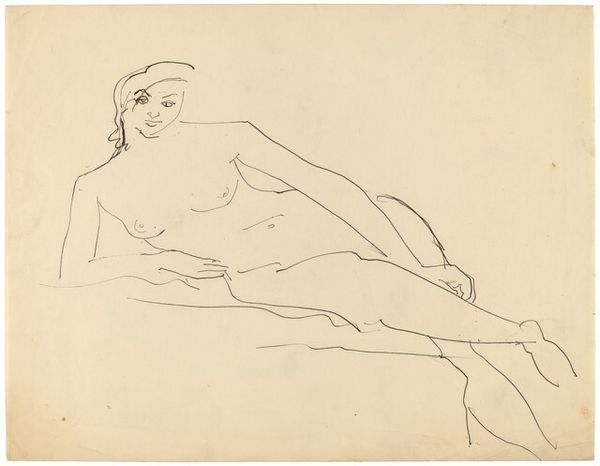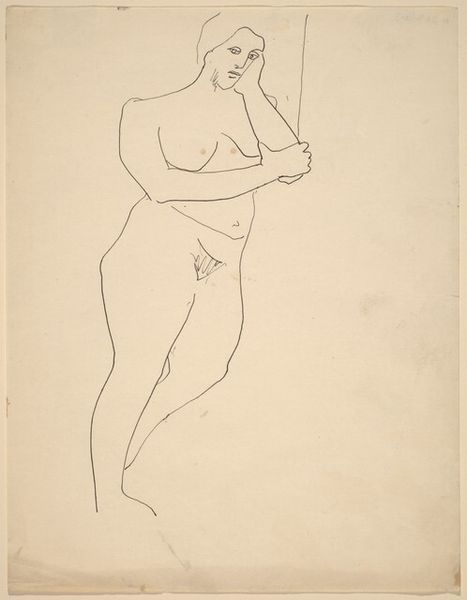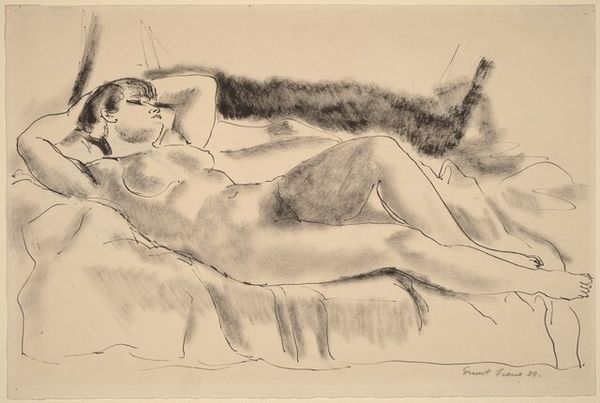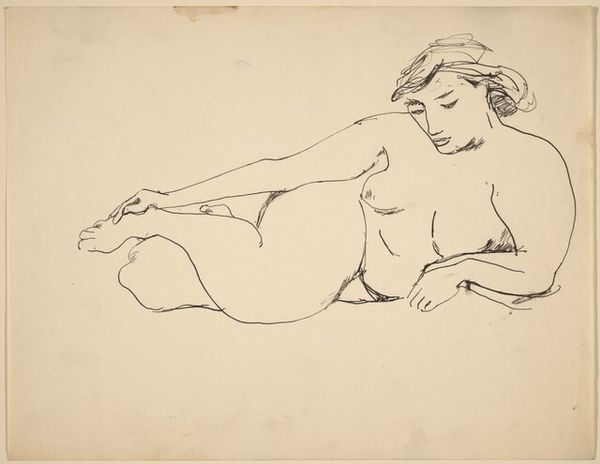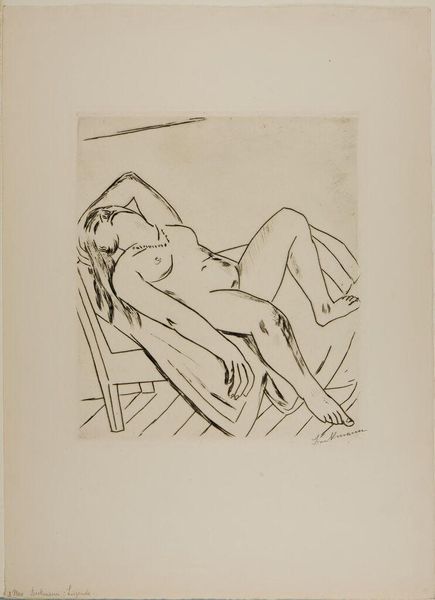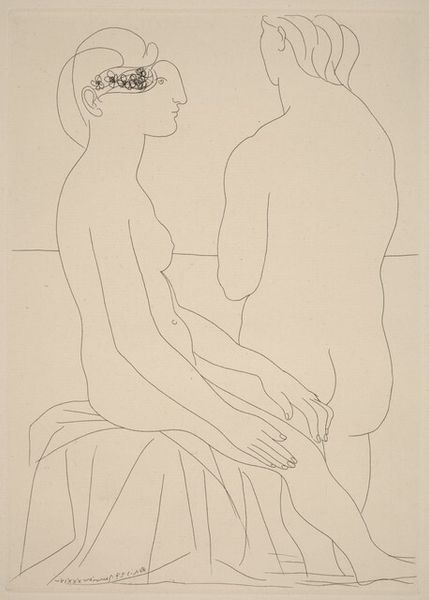
drawing, print, pencil
#
portrait
#
pencil drawn
#
drawing
#
cubism
# print
#
pencil sketch
#
figuration
#
pencil drawing
#
pencil
#
line
#
nude
#
modernism
Dimensions: sheet: 28.5 x 37.8 cm (11 1/4 x 14 7/8 in.)
Copyright: National Gallery of Art: CC0 1.0
Editor: Here we have Picasso's "Woman at the Seashore," created around 1923 or 1924. It’s a pencil drawing or print, really quite simple in its linework, almost serene despite the cubist influence. What catches your eye most in this piece? Curator: It’s the seemingly simple line, isn't it? This piece really speaks to the male gaze and its power within art history. The figure's pose, seemingly relaxed, can also be interpreted as vulnerable, passively on display. What is she looking at? Editor: She looks almost contemplative, gazing out at the sea… but I guess it depends on how you read her expression, right? Do you think Picasso was intentionally commenting on the objectification of women? Curator: Intention is always a tricky thing to determine. However, considering the socio-political context of the 1920s, the rise of consumer culture, and the objectification of the female body in advertising, we can't ignore those connections. It becomes less about Picasso’s intent, and more about how the artwork functions within these larger power dynamics. Do you think the medium – pencil drawing – influences how we view the subject? Editor: I hadn’t considered that, but it’s much more immediate and personal than a grand oil painting might be. It’s like a glimpse into his process. That intimacy complicates things further, doesn’t it? It feels so exposed. Curator: Exactly. And thinking about the male artistic genius romanticized during that period versus the agency, or lack thereof, afforded to women... that contrast is potent. What have you gained from examining it this way? Editor: I now appreciate that, as a viewer, I can impose a contextualized critical lens on even seemingly innocuous subjects to reveal some deeper cultural insights and meaning behind a piece like this. Curator: Precisely. Recognizing these narratives is key to engaging with art critically.
Comments
No comments
Be the first to comment and join the conversation on the ultimate creative platform.
